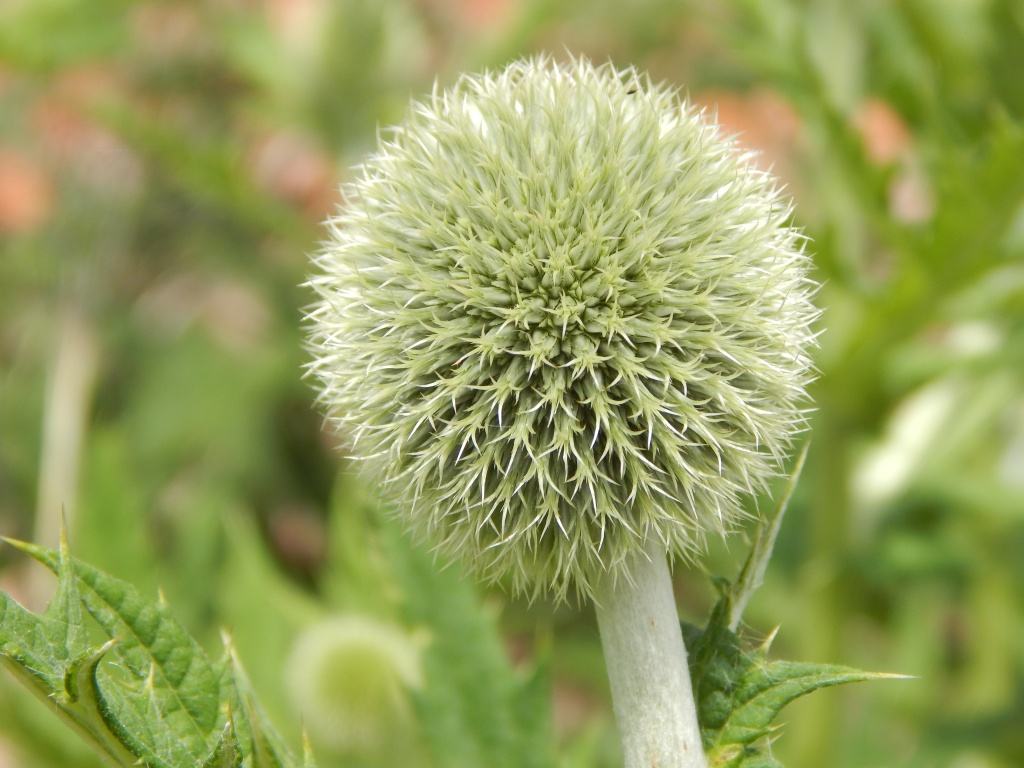
[119] Echinops sphaerocephalus, Globe Thistles
Introduction
Echinops sphaerocephalus, the Glandular Globe Thistle (or Globe-thistle or Globethistle) is one type of thistle cultivated in gardens for its attractive spherical flower heads. It is also known as a Great Globe Thistle or Pale Globe Thistle. Echinops ritro, the Southern Globe Thistle, and Echinops bannaticus, the Blue Globe Thistle, are very similar species and the cultivated plants are often just termed as Echinops varieties.
Taxonomy
Kingdom – Plants
Division – Vascular Plants
Class – Angiosperms (Flowering Plants)
Order – Asterales
Family – Asteraceae
Subfamily Carduoideae
Tribe – Cynareae
Genus – Echinops
Scientific Names – Echinops sphaerocephalus, Echinops ritro, Echinops bannaticus
There are many cultivated varieties.
Name
I will let you work out why they are called Globe Thistles and you may have picked up enough Latin by now to understand ‘sphaerocephalus.’ (If you still need a clue, think of spheres and look at [080] the Black-headed Gull.)
This is the middle one of three species with scientific names to do with the sea urchin or hedgehog (a species we will meet next month.)
I can’t find ‘ritro’ but ‘bannaticus; comes from the Banat, a region split between Romania, Hungary and Serbia, where the plant is found.
Description
I have said much about Asters and thistles and you will have spotted from the taxonomy above that Echinops is closely related to [111] the Artichoke. Visually, they have some similarity with [083] Woolly Thistle.
They are thistles and have almost perfectly spherical flower heads, so they are called globe thistles. That’s about all I can say. There are well over a hundred species, all very similar with flowers varying in colour from white through various shades of blue.
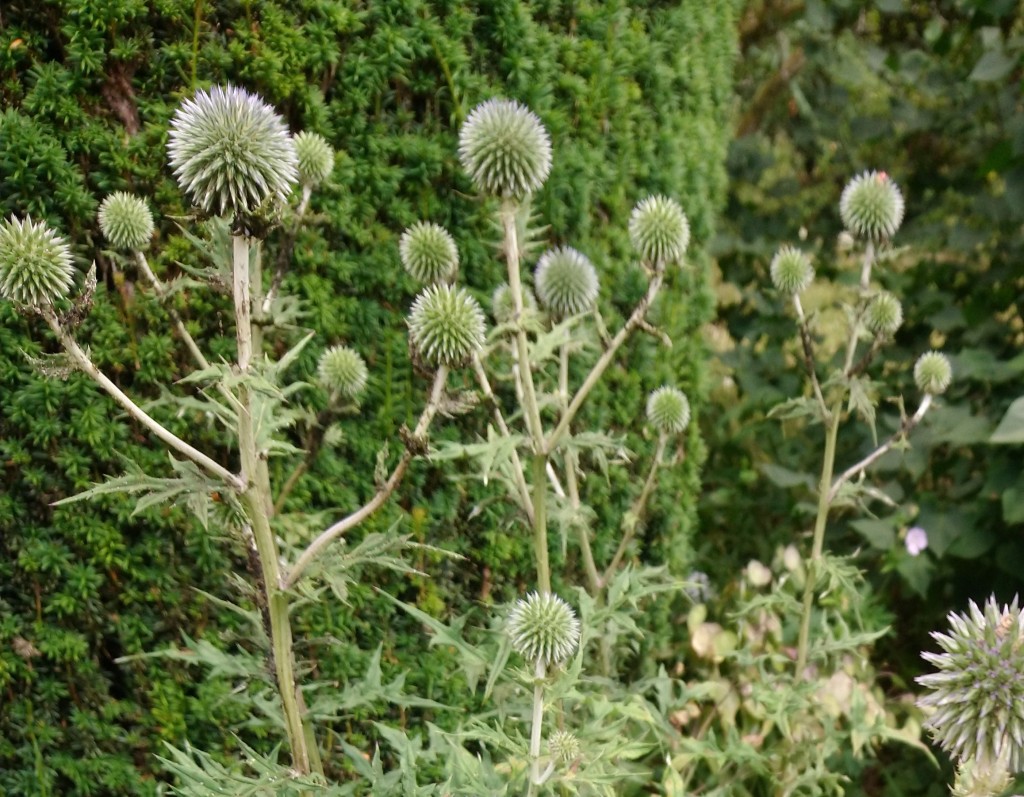
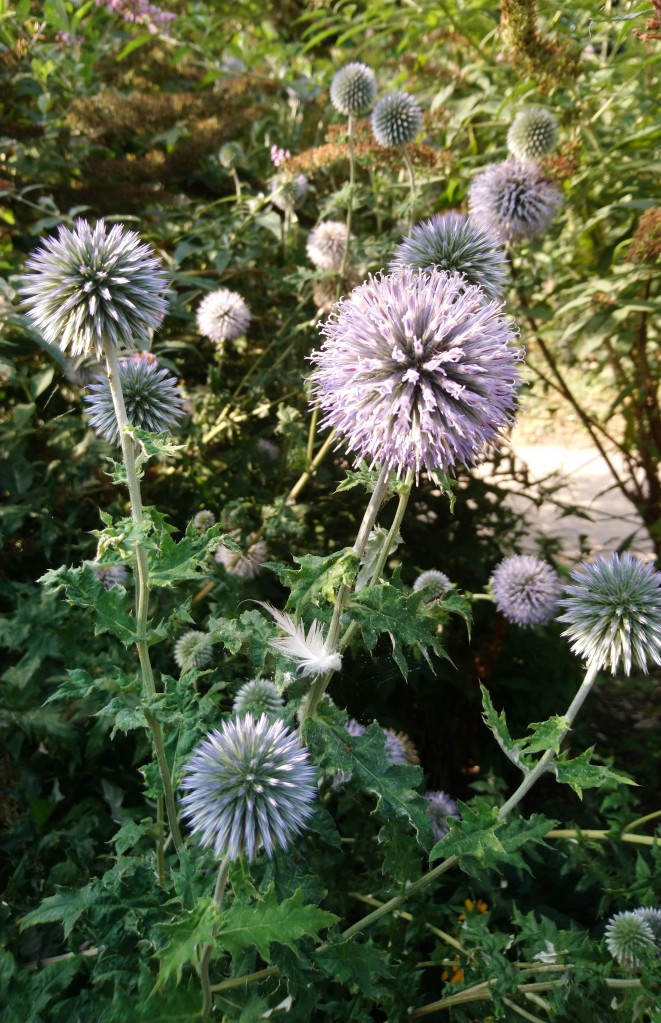
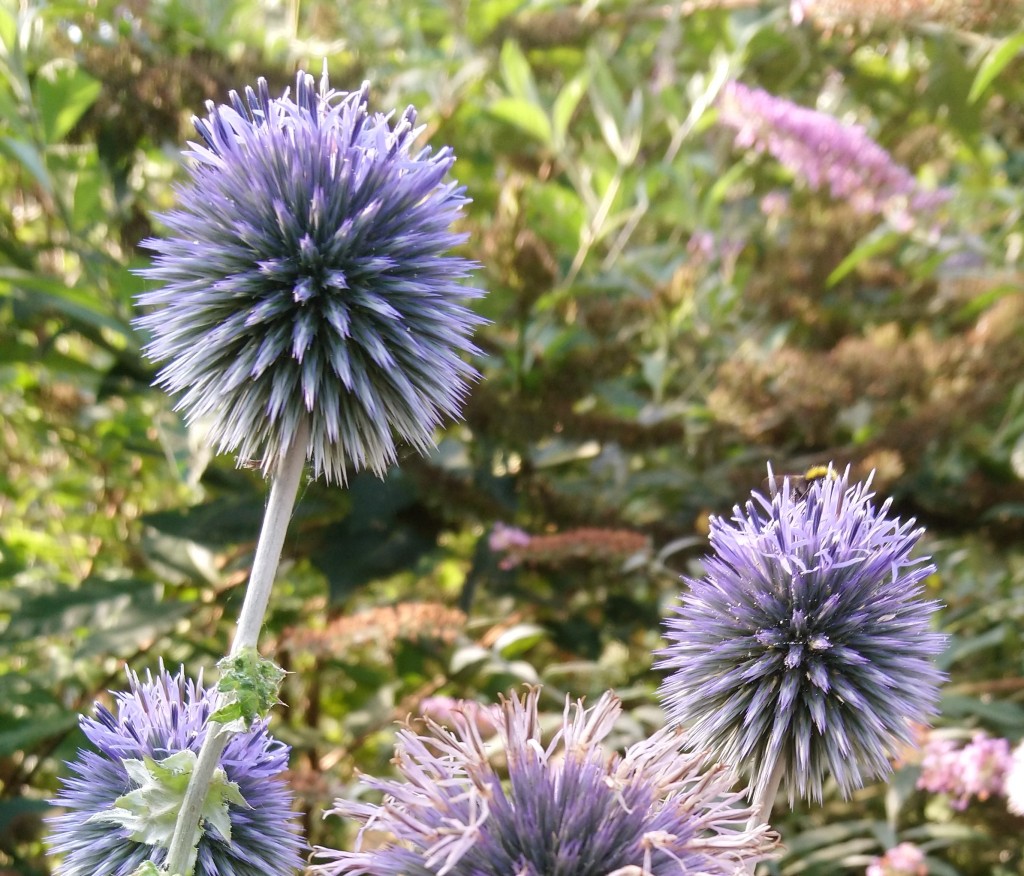

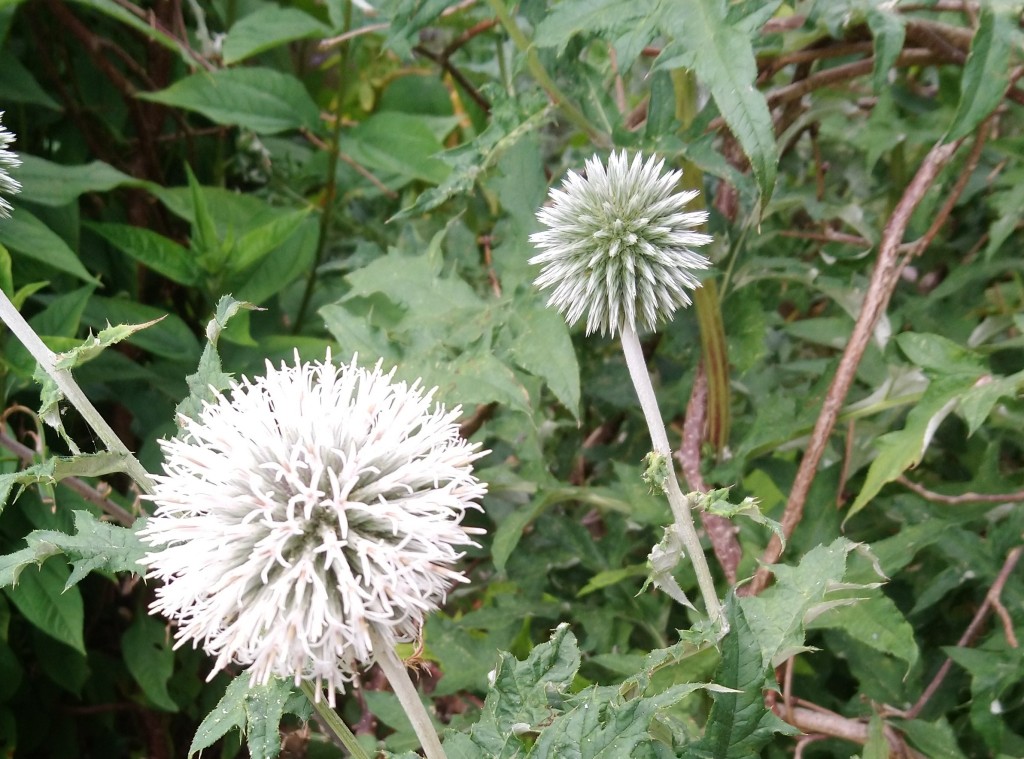
Habitat and use
Globe Thistles are native to Europe, parts of Asia and north Africa. They are widely cultivated as garden plants in several varieties and cultivars.
Other Notes
This is probably more common in parks and public gardens than ordinary household gardens.
See also
You can expect a few more Asters to come.
